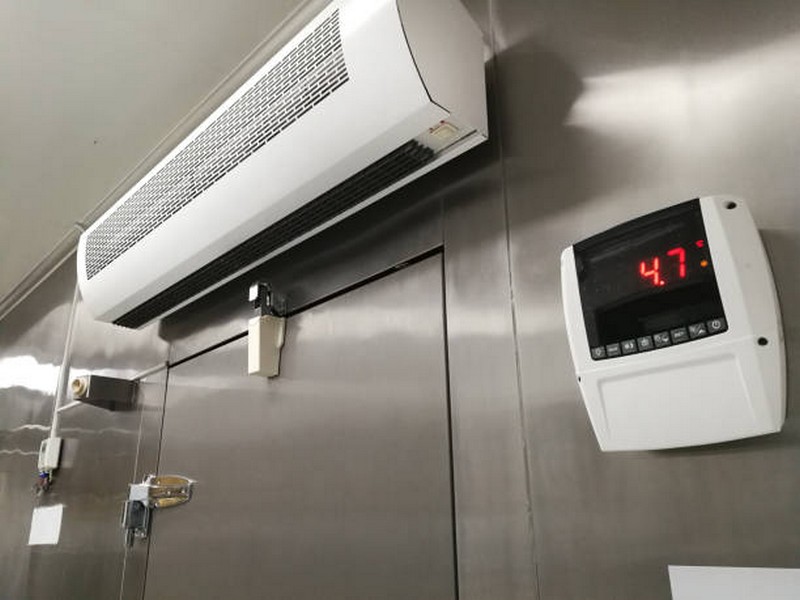Precision is essential in the complex ballet that is cold storage management. The capacity to correctly monitor and manage temperature inside cold rooms is more than simply an issue of efficiency; it is also essential for safety, product integrity, and regulatory compliance. Tools and systems for temperature monitoring have improved substantially as technology has advanced, providing new levels of insight, control, and convenience.
We’ve compiled a list of cutting-edge temperature monitoring solutions that are redefining cold room management and guaranteeing that organizations meet the highest quality and safety requirements.
The Vital Role of Temperature Monitoring in Cold Storage
Effective temperature monitoring in cold rooms goes beyond merely ensuring that goods are kept cold. It involves maintaining specific conditions tailored to the needs of various products, from perishable foods to sensitive pharmaceuticals, each with its own strict requirements. Fluctuations or deviations in temperature can lead to spoilage, compromised safety, and significant financial loss, not to mention the potential for legal ramifications in cases of non-compliance with industry regulations.
Advanced Temperature Monitoring Solutions
The latest advancements in temperature monitoring technology provide comprehensive solutions that offer more than simple temperature readings. They deliver a holistic approach to cold room management, incorporating real-time data logging, remote monitoring, and predictive analytics. Here are some of the cutting-edge tools and features at the forefront of the industry:
- Wireless Temperature Sensors: These devices eliminate the need for manual checks and wired installations, allowing for flexible placement and real-time temperature tracking across multiple locations within a cold room. Wireless sensors can transmit data to a central system, enabling continuous monitoring without physical intervention.
- IoT-Enabled Monitoring Systems: The Internet of Things (IoT) has transformed temperature monitoring by connecting sensors and devices to the internet, facilitating the remote tracking and management of cold room conditions via smartphones or computers. IoT systems can alert users to temperature deviations, enabling swift action to prevent spoilage.
- Cloud-Based Data Analytics: Modern temperature monitoring systems leverage cloud computing to store and analyze vast amounts of data. This capability allows for trend analysis, predictive maintenance, and more informed decision-making, ensuring that cold storage facilities operate at optimal efficiency.
- Automated Alert Systems: Immediate notification of temperature anomalies is crucial for mitigating risks. Today’s monitoring tools can send alerts via email, SMS, or app notifications, providing the ability to respond quickly to potential issues, even when off-site.
- Integrated Control Systems: Some temperature monitoring solutions are part of broader facility management systems, allowing for the integration of temperature control with humidity management, air quality monitoring, and security systems. This holistic approach ensures that all aspects of cold room environment are managed cohesively.
Implementing Cutting-Edge Monitoring Tools: Best Practices
Adopting advanced temperature monitoring solutions requires careful consideration to ensure they align with your specific needs. Here are some best practices for implementation:
- Assess Compatibility: Ensure that any new monitoring technology is compatible with your existing cold room infrastructure and can be integrated seamlessly.
- Prioritize Scalability: Choose solutions that can grow with your business, allowing for the addition of more sensors or integration with new technologies as your needs evolve.
- Emphasize User-Friendliness: Opt for systems with intuitive interfaces and straightforward reporting capabilities, ensuring that your team can easily access and interpret the data.
- Invest in Training: Equip your staff with the knowledge to effectively use the monitoring tools, understanding both their capabilities and how to respond to the data they provide.
- Maintain Regularly: Like any technological solution, temperature monitoring systems require regular maintenance and updates to function correctly and provide accurate data.
The Future of Temperature Monitoring in Cold Rooms
As technology keeps getting better, especially in areas like artificial intelligence (AI) and machine learning, the future of keeping an eye on temperatures in cold rooms is closely linked to it. These technologies claim to improve prediction analytics by letting you see changes in storage conditions coming and making changes automatically before they become a problem. Also, as stronger wireless connection technologies like 5G are developed, they will make remote tracking systems even more reliable and quick to respond.
Businesses need to keep up with rising standards for quality and safety when storing perishable goods. This is why improved temperature tracking options are so important. By using cutting-edge tools, cold storage facilities can keep a tight grip on their surroundings, cutting down on waste and increasing productivity.
These technologies make it easy to handle cold rooms better in a time when data is king. They are setting new standards for the industry and opening the door for more innovations in the future.

